16 Fairy-tale Castles in Wales to Inspire Your Next Trip
- Oops!Something went wrong.Please try again later.
These Welsh castles were built for royalty, and now you can visit them for a fairy-tale vacation.
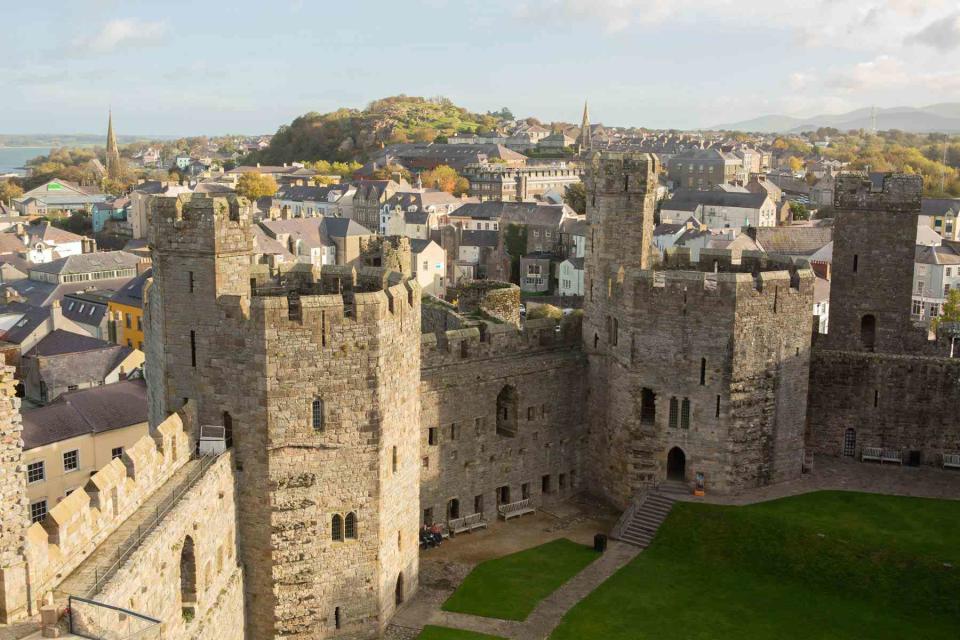
Rory Fuller/Travel+Leisure
Sometimes called the "Land of Castles" and "Castle Capital of the World," Wales once had about 600 castles. Many of these Welsh castles are now in ruins, while others are open for tours or even overnight stays. Visitors to Wales might notice the seemingly unusual spellings of the castle and city names, so here's a little information about the fascinating ancient language of the country. The Welsh language (Cymraeg in Welsh) is Celtic in origin and dates back to 600 B.C. The alphabet uses 29 letters that include "ll," "ff," and "dd" which explains why these are often seen in Welsh words, including the names of castles ("castells" in Welsh). The language is still spoken in Wales, along with English, and it is taught in most Welsh schools to support its survival. When you travel to Wales to enjoy its scenery, beaches, forests, and of course, its castles, you might also notice its national emblem of daffodils.
Here, find 16 beautiful castles in Wales to inspire your next trip.
Related:14 Gorgeous U.S. Castles That Are Fit for a Fairy Tale
Castell Coch
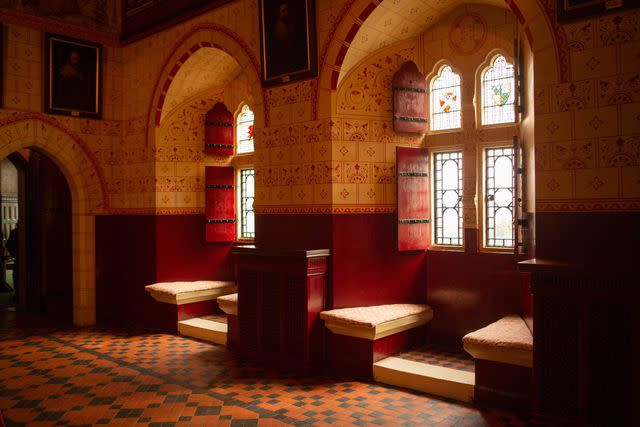
Rory Fuller/Travel+Leisure
Thought to have been constructed by the Normans in the late 11th century to defend Cardiff, Castell Coch ("Red Castle") overlooks the Taff Gorge on the northern boundary of the city. The original castle was destroyed, probably during the Welsh rebellion of 1314, and many centuries later, it was rebuilt in the Victorian style on its medieval site. Today, visitors can explore the restored interior of the castle as well as the surrounding areas on the Taff Trail, surrounded by ancient beech trees of the Fforest Fawr.
Cardigan Castle
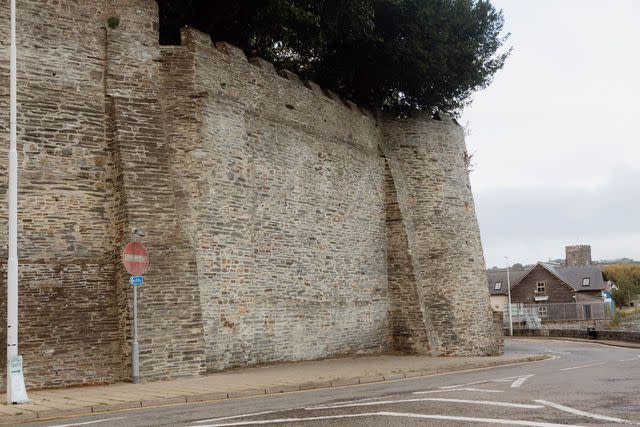
Rory Fuller/Travel+Leisure
This 11th-century castle, located on the River Teifi, combines ten centuries of history with the present day. Visitors can tour the remains of the original castle and then stay for the night or dine on traditional Welsh dishes in its restaurant, Cegin 1176 Kitchen, built into the castle walls. The first National Eisteddfod, now an annual celebration of Welsh culture, was held in 1176 to mark the completion of the castle by Lord Rhys.
Caerphilly Castle
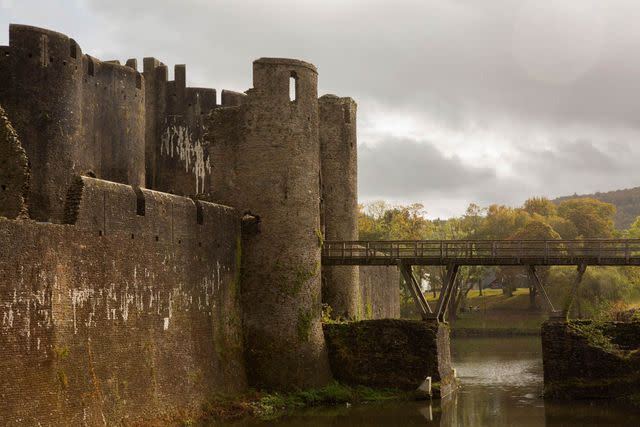
Rory Fuller/Travel+Leisure
Set on an expansive 30-acre site, Caerphilly Castle is the largest castle in Wales and the second-largest in Britain after Windsor. Built during the 13th century by Norman nobleman Gilbert de Clare to protect his land from Welsh Prince Llewellyn Gruffudd, the castle features a concentric ring of walls as well as gatehouses, towers, a maze, a dragon's den, and a great hall, giving visitors much to explore during tours of the castle and grounds.
Conwy Castle
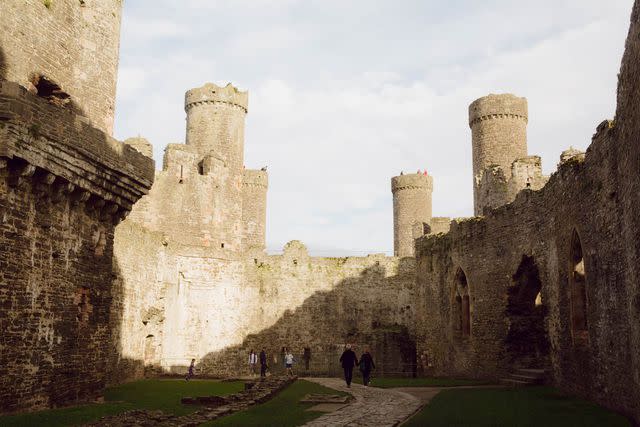
Rory Fuller/Travel+Leisure
This well-preserved castle, built in the late 13th century for England's King Edward I, is located on the north coast of Wales on a hill overlooking the Conwy Estuary. The walls surrounding the town are still standing, and guided tours are available. Views of the mountains, river, and medieval town can be seen with a climb to the top of the towers.
Caernarfon Castle
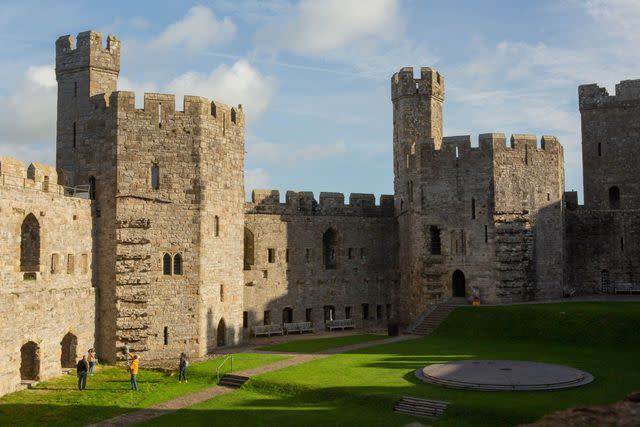
Rory Fuller/Travel+Leisure
This magnificent castle was built in the 13th century on the site of a Roman fort at the mouth of the River Seiont. Much of the outer wall that surrounded the town still stands, along with a series of towers, including two that house The Royal Welch Fusiliers Museum. King Edward's son was born in the castle and named the Prince of Wales, the title given to the eldest son of the reigning monarch since that time. In 1969, Prince Charles' investiture was held in Caernarfon Castle.
Cardiff Castle
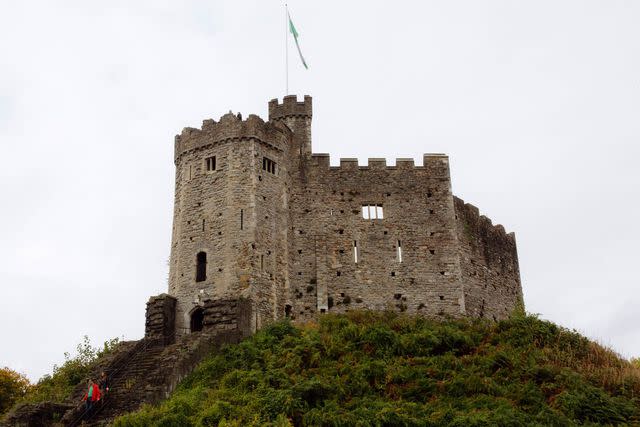
Rory Fuller/Travel+Leisure
One of the most popular tourist attractions in Wales, Cardiff Castle dates back to ancient Rome, and archaeological remains from that era can be seen today, despite changes over the years. Additions and redesigns have transformed it into a Norman keep (fortified tower), a medieval fortress, and a Gothic Revival-style residence. Located on the Taff River, the castle is in the middle of the city, and visitors can enter for a guided tour or enjoy the castle with a stroll through town.
Kidwelly Castle
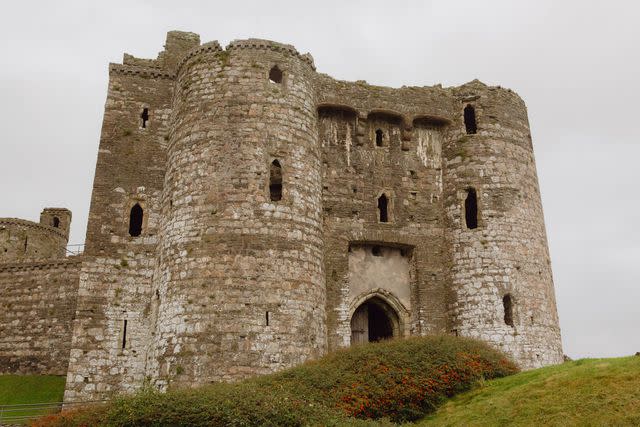
Rory Fuller/Travel+Leisure
Overlooking the River Gwendraeth in southwest Wales, Kidwelly Castle was first constructed in the early 12th century by the Normans and then was later rebuilt in stone as seen today. One of its legends tells of the brave Princess Gwenllian who went to battle against the Normans and whose headless ghost is said to haunt the castle grounds. A monument to the princess stands near the castle gatehouse. The castle has the distinction of appearing in the first scene of "Monty Python and the Holy Grail."
Laugharne Castle
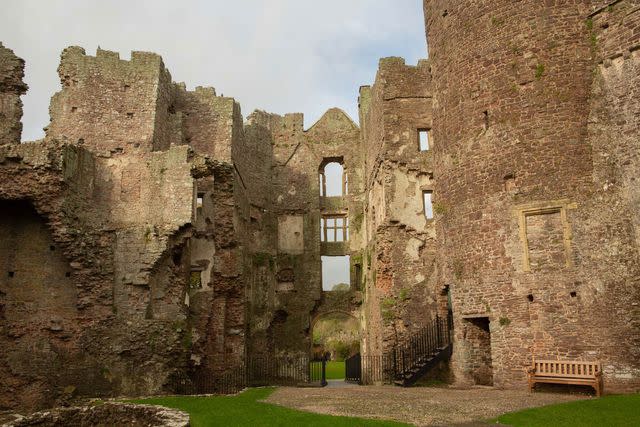
Rory Fuller/Travel+Leisure
Located in South Wales in the town of Carmarthenshire, the castle has been destroyed and rebuilt several times since it was founded by the Normans in 1116. Later, the castle was captured by Lord Rhys of Wales and after changing hands many times, it was eventually rebuilt as a Tudor manor house in the 16th century. Visitors can see the remains of the original stone wall and towers as well as the gardens and places that inspired writer Dylan Thomas.
Raglan Castle
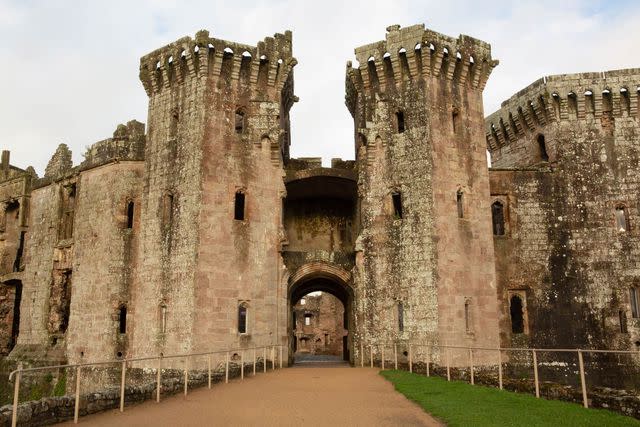
Rory Fuller/Travel+Leisure
Welsh nobleman Sir William ap Thomas is credited with building the moated Great Tower of the castle in 1435, and his son Sir William Herbert created the gatehouse. Sadly, much of the castle was destroyed in battles, but it was later transformed into an opulent residence. Today, visitors can still see the restored Grand Staircase, medieval wood carvings, hidden rooms, a moat, a garden, and stunning views of the countryside.
Dinefwr Castle
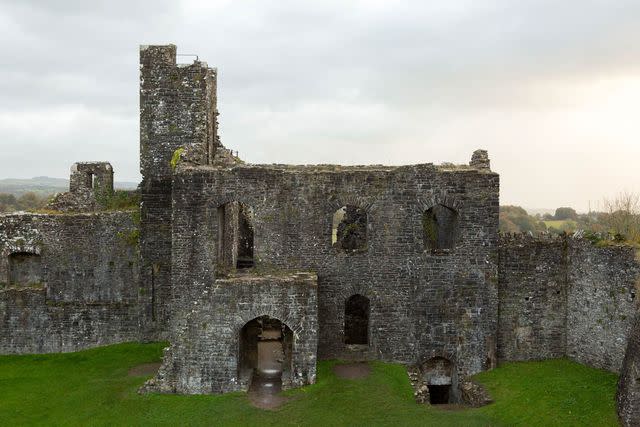
Rory Fuller/Travel+Leisure
A visit to the ruins of Dinefwr Castle set along the River Tywi provides beautiful views of the Tywi Valley. Thought to have been built under the rule of Lord Rhys during the 12th century, the castle was mostly destroyed by the end of the Middle Ages, but was later partially restored. Today, the area is home to the historic Newton House surrounded by a National Nature Reserve and an 18th-century deer park.
Pembroke Castle
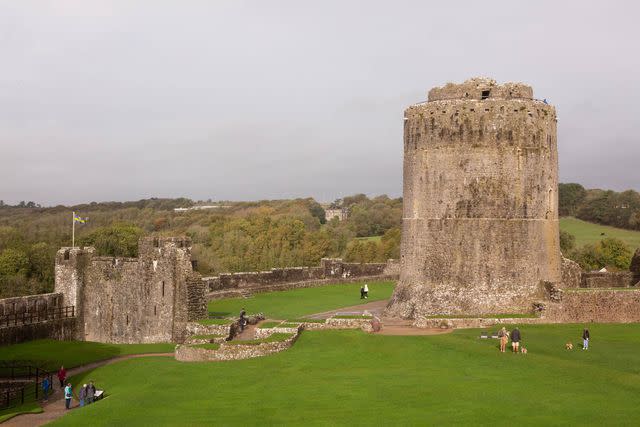
Rory Fuller/Travel+Leisure
Located in Pembrokeshire in South Wales, the castle was first built of wood, but when William Marshal became Earl of Pembroke in 1189, he reconstructed it in stone. Today, visitors can explore the grounds, towers, battlements, and a prison in the subterranean cave under the castle as well as enjoy the view from the top — after ascending a narrow staircase. Known as the birthplace of King Henry VII, the castle stages historic reenactments, falconry displays, and a Christmas market.
Roch Castle
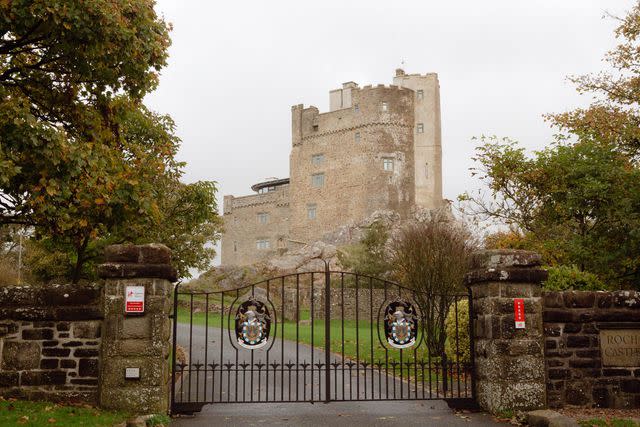
Rory Fuller/Travel+Leisure
Also in Pembrokeshire, Roch Castle was built in the late 12th century. Norman Knight Adam de Rupe was the first named inhabitant. His name in French is "de la Roche," hence the name of the castle. After many ownership changes through the years, the castle has been extensively renovated, and it reopened in 2013 as a six-bedroom luxury hotel. Its original footprint remains intact, and guests stay in rooms named for de Rupe, ap Gruffydd, and other historic inhabitants. The art-filled property features stunning views, a dining room, and a reception team to help arrange local experiences.
Chepstow Castle
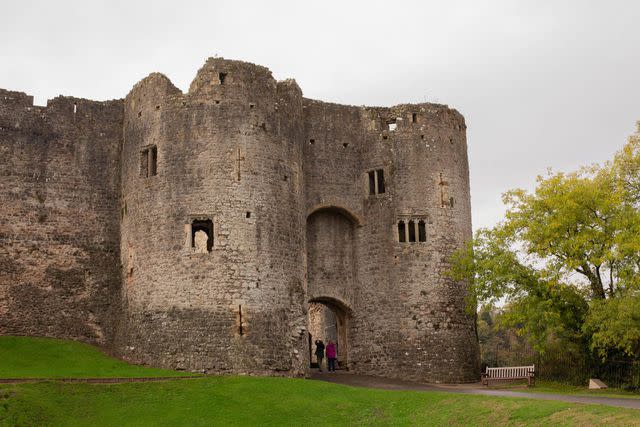
Rory Fuller/Travel+Leisure
Construction on this castle (Castell Cas-gwent in Welsh) began in 1067 by Norman Lord William Fitz Osbern, a close friend of William the Conqueror. One of the first Norman castles built in Wales, it is the oldest surviving post-Roman stone fortification in Britain. Set on a limestone cliff above the River Wye in Monmouthshire, the castle is well preserved, and it is open for tours and offers lovely views of the surrounding area.
Harlech Castle
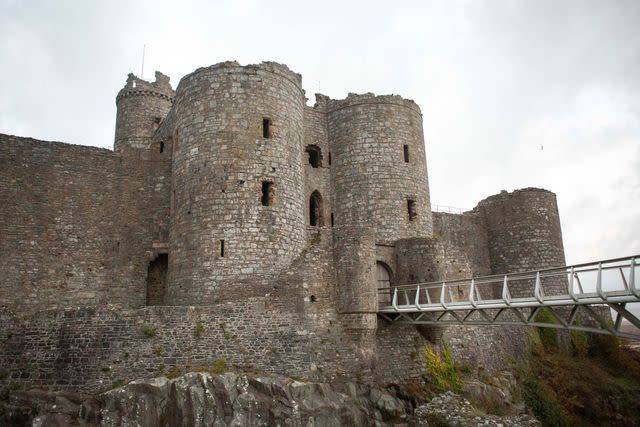
Rory Fuller/Travel+Leisure
One of Edward I's four World Heritage Site castles in North Wales overlooking Cardigan Bay, Harlech is an example of the "walls within walls" designs of architect Master James of St. George. Its many battles through the centuries inspired the popular rugby anthem, "Men of Harlech." Today, visitors can tour the castle, entering through a floating footbridge.
Llancaiach Fawr
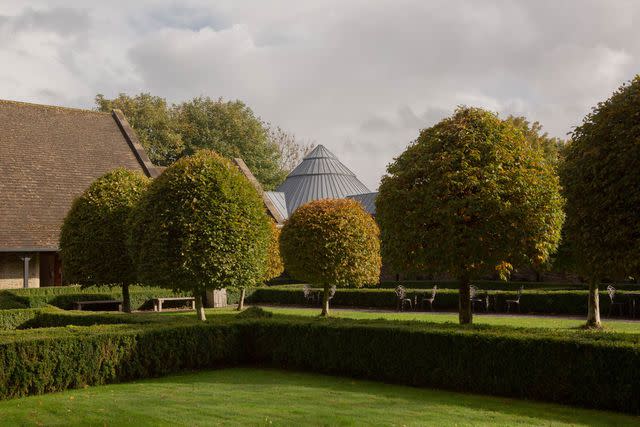
Rory Fuller/Travel+Leisure
Actually a Tudor manor house built on the site of an earlier medieval structure in South Wales, Llancaiach Fawr has been restored and now presents an experience that represents life during the 17th century. Costumed servants create the scene, and guests are immersed in the manor's history, learning about the lives of people during the Civil Wars.
Bodelwyddan Castle
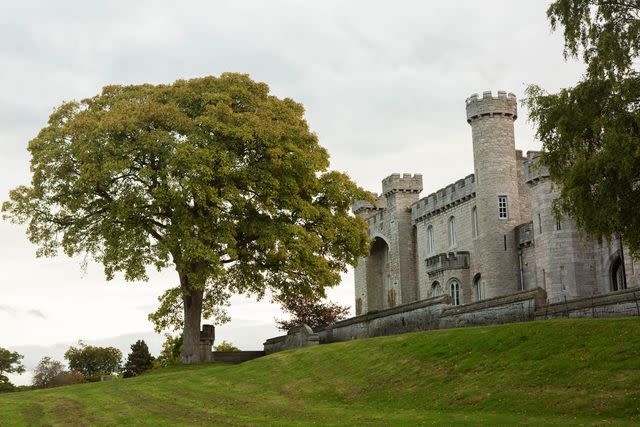
Rory Fuller/Travel+Leisure
Stay in a historic manor house when you book a room at Bodelwyddan Castle, located near the North Wales coast near Snowdonia. Guests at this regal hotel can enjoy modern amenities, a spa, entertainment, dining, and the hotel's romantic grounds.
For more Travel & Leisure news, make sure to sign up for our newsletter!
Read the original article on Travel & Leisure.
